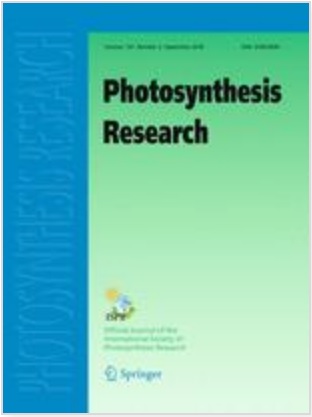As one of a number of new technologies for the harnessing of solar energy, there is interest in the development of photoelectrochemical cells based on reaction centres (RCs) from photosynthetic organisms such as the bacterium Rhodobacter (Rba.) sphaeroides. The cell architecture explored in this report is similar to that of a dye-sensitized solar cell but with delivery of electrons to a mesoporous layer of TiO2 by natural pigment-protein complexes rather than an artificial dye. Rba. sphaeroides RCs were bound to the deposited TiO2 via an engineered extramembrane peptide tag. Using TMPD (N,N,N′,N′-tetramethyl-p-phenylenediamine) as an electrolyte, these biohybrid photoactive electrodes produced an output that was the net product of cathodic and anodic photocurrents. To explain the observed photocurrents, a kinetic model is proposed that includes (1) an anodic current attributed to injection of electrons from the triplet state of the RC primary electron donor (PT) to the TiO2 conduction band, (2) a cathodic current attributed to reduction of the photooxidized RC primary electron donor (P+) by surface states of the TiO2 and (3) transient cathodic and anodic current spikes due to oxidation/reduction of TMPD/TMPD+ at the conductive glass (FTO) substrate. This model explains the origin of the photocurrent spikes that appear in this system after turning illumination on or off, the reason for the appearance of net positive or negative stable photocurrents depending on experimental conditions, and the overall efficiency of the constructed cell. The model may be a used as a guide for improvement of the photocurrent efficiency of the presented system as well as, after appropriate adjustments, other biohybrid photoelectrodes.

